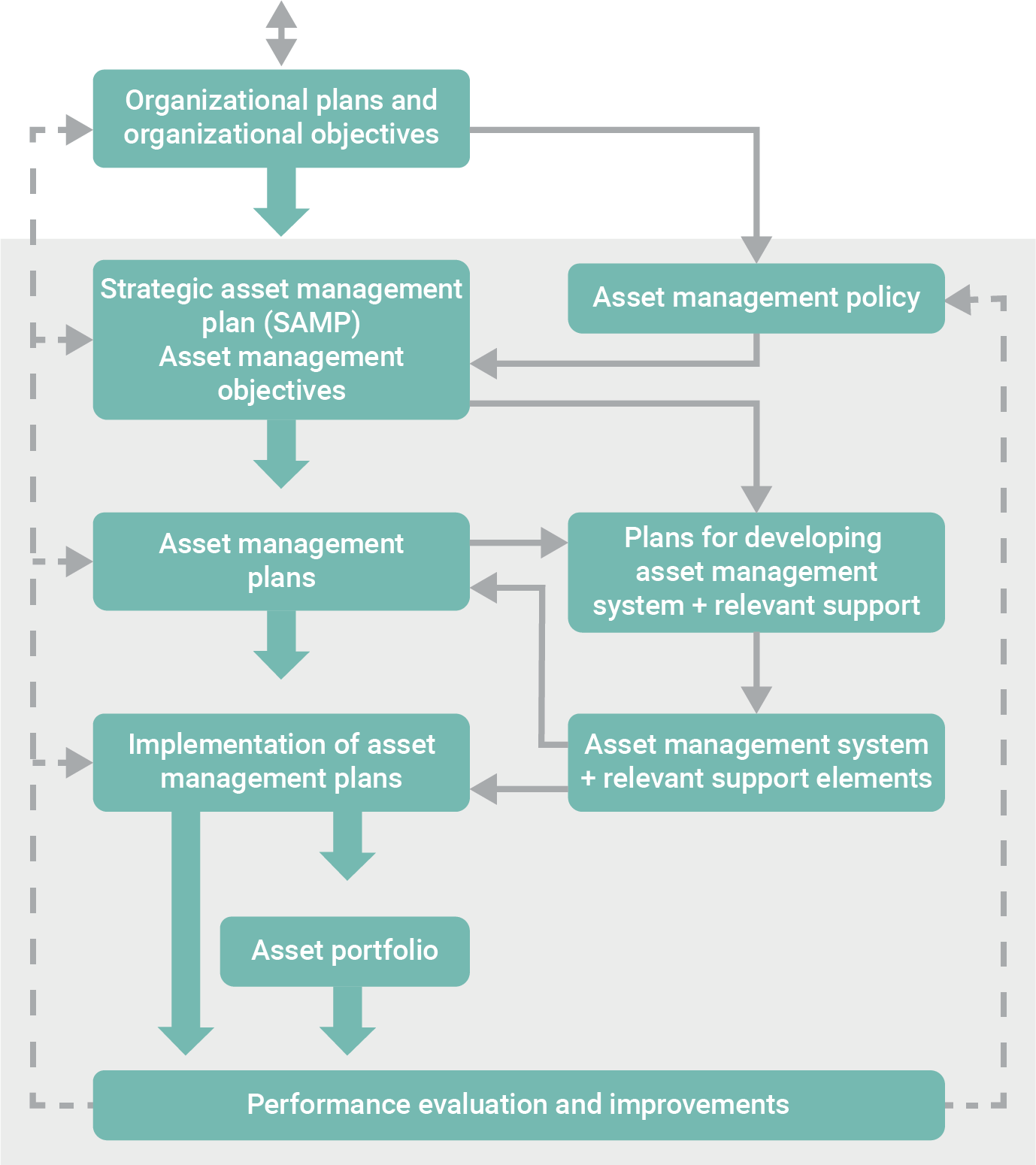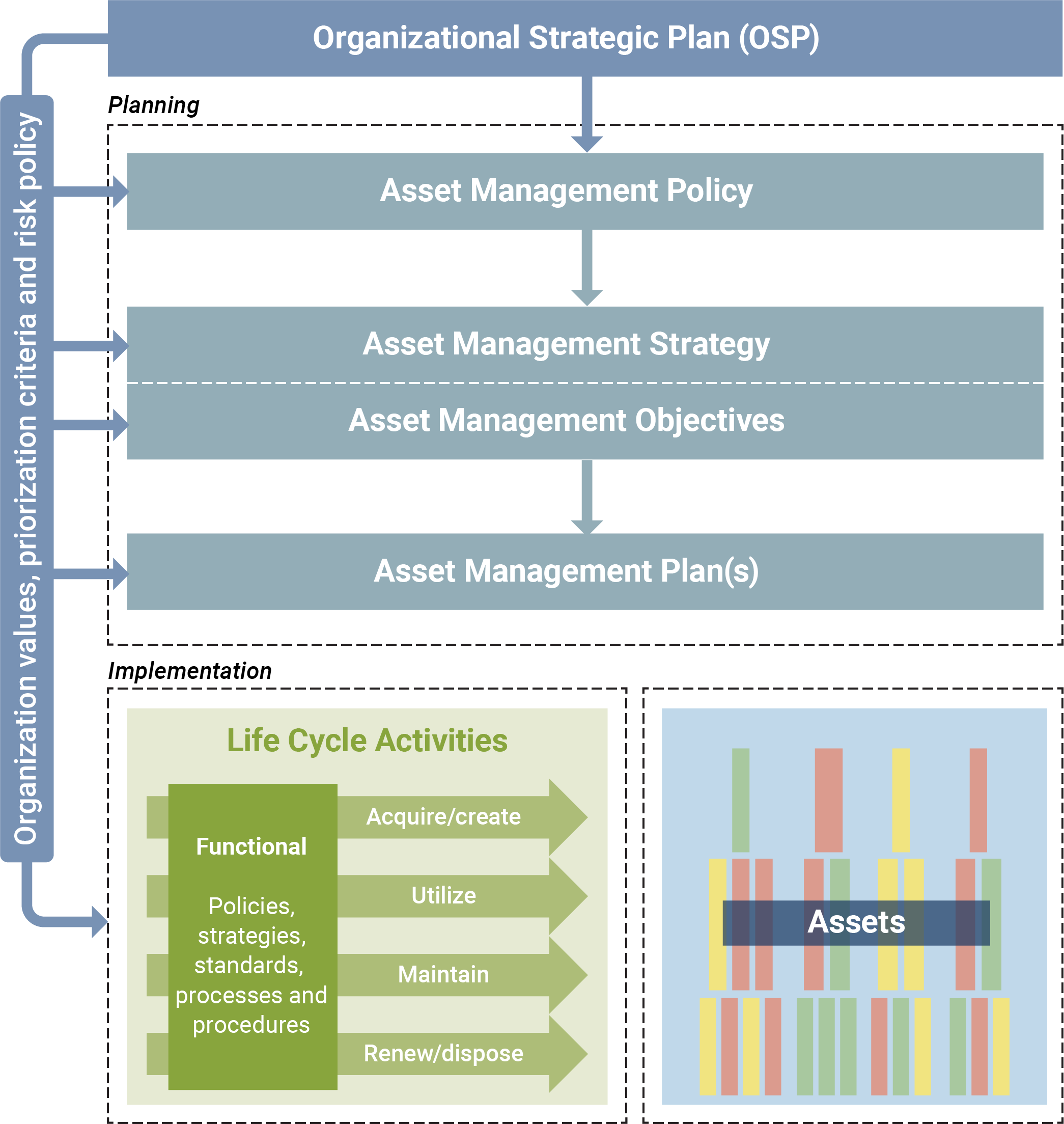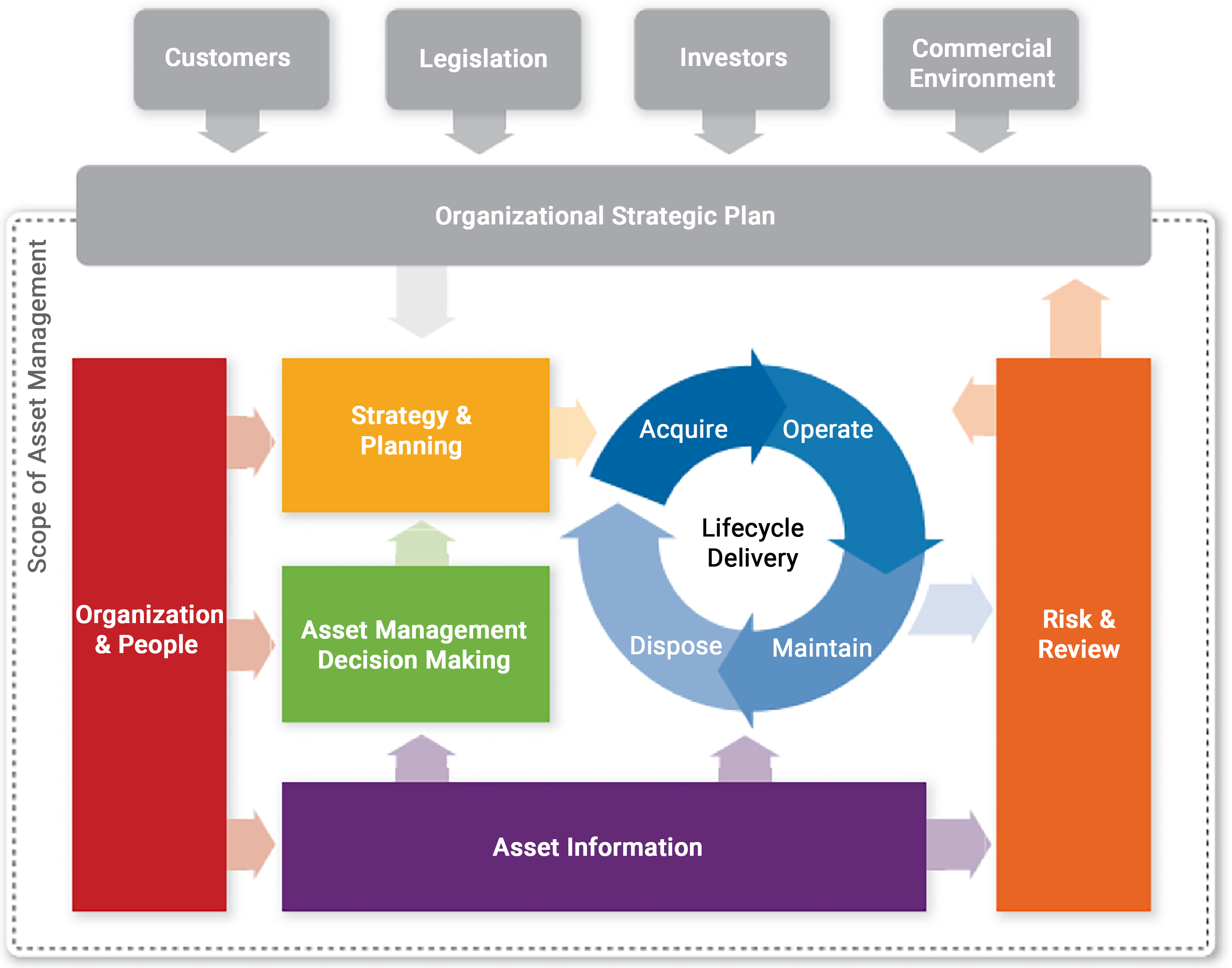- Chapters
-
Chapter 1
Sections - Chapter 1 Home Page
- Chapter PDF
Chapter 1
Quick Links
1.3.1
Frameworks and Guidance
There are numerous existing frameworks, models, and guidance documents related to asset management. This Guide is intended to build upon these existing resources and provide updated information where necessary.
International Organization for Standardization (ISO)
ISO has published a set of standards on asset management. Standard 55000 provides an overview of asset management and asset management systems (i.e. management systems for the management of assets). It also provides the context for ISO 55001 and ISO 55002. International cooperation in the preparation of these standards has identified common practices that can be applied to the broadest range of assets, in the broadest range of organizations, across the broadest range of cultures. The adoption of this International Standard enables an organization to achieve its objectives through the effective and efficient management of its assets. The application of an asset management system provides assurance that those objectives can be achieved consistently and sustainably over time.
Additional standards related to asset management include ISO 55010 which covers guidance on alignment of asset management, finance and accounting; and ISO 55011 which covers guidance on the development of government asset management policy. For more information, the standard is available to purchase: https://www.iso.org/standard/55088.html
Figure 1.3 Relationship between key elements of an asset management program
The gray box designates the boundary of the asset management system
Source: Adapted from ISO 55000. 2016
Publicly Available Standard (PAS) 55
Prior to the development of ISO 55000, the Publicly Available Standard (PAS) 55 was released by the British Standards Institute. This standard contains terms and definitions; information on asset management policy, strategy, and objectives; discussion on implementing asset management plans; as well as performance assessment and improvement information. The standard is available to purchase: https://www.iso.org/obp/ui/#iso:std:iso:55000:ed-1:v2:en.
Figure 1.4 Planning and Implementation Elements of an Asset Management System
Source: Adapted from PAS 55
Institute of Asset Management (IAM)
The IAM publication, Asset Management – An Anatomy (2015), provides a basic overview of asset management and its benefits. It also provides a discussion of six asset management subject areas: Strategy and Planning, Asset Management Decision-Making, Life Cycle Delivery, Asset Information, Organization and People, and Risk and Review. These subject areas are reflected in the framework shown in Figure 1.5.
IAM also has information on developing and maintaining a Strategic Asset Management Plan (SAMP). All of their resources can be found on their website: https://theiam.org/.
Figure 1.5 Planning and implementation elements of an asset management system
Source: Adapted from PAS 55
Institute of Public Work Engineering Australasia (IPWEA)
Institute of Public Work Engineering Australasia (IPWEA) IPWEA has produced the International Infrastructure Management Manual (IIMM). This guide provides checklists, process, guidance, and case studies on asset management practice from agencies globally. The manual contains guidance for all infrastructure types and is suitable for agencies of all levels of maturity. The manual is written to align with ISO 55000 with a focus on how to implement asset management concepts.
The IIMM must be purchased from the IPWEA online bookshop which can be accessed here: https://www.ipwea.org/resourcesnew/bookshop/iimm.
UK Road Liaison Group
The UK Road Liaison Group developed the publication titled Well-Managed Highway Infrastructure: A Code of Practice. This code is designed to support and promote the adoption of an integrated asset management approach to highway infrastructure based on the establishment of levels of service through risk based assessment. The code is broken into four sections: Overarching Principles, Highways, Structures, and Lighting. The Code also summarizes 36 recommendations put forward to the Department for Transport to enhance asset management across UK highway networks.
A PDF of this document is available online: http://www.ukroadsliaisongroup.org/en/utilities/document-summary.cfm?docid=4F93BA10-D3B0-4222-827A8C48401B26AC.



